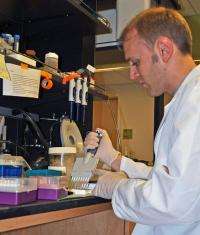Academic medicine has major economic impact on the state and the nation

A report released this week from the Association of American Medical Colleges shows that its member medical schools, teaching hospitals and healthcare systems had a combined economic impact of more than $587 billion in the United States in 2011. The firm Tripp Umbach conducted the economic measurements and analysis.
The AAMC is a not-for-profit association representing 133 accredited medical schools and 255 major teaching hospitals and health systems in the United States, including Department of Veterans Affairs medical centers.
Washington was among the 25 states with the highest economic impact from academic medicine, which encompasses three interwoven missions: training physicians and biomedical scientists, conducting research, and providing patient care.
UW Medicine is one of the largest members of the AAMC in the country. UW Medicine includes four hospitals (UW Medical Center, Harborview Medical Center, Northwest Hospital, and Valley Medical Center), the University of Washington School of Medicine; UW Physicians, which is the largest physician practice plan in the northwest; UW Neighborhood Clinics; and Airlift Northwest. UW Medicine also shares in the ownership and governance of the Seattle Cancer Care Alliance and Children's University Medical Group.
The total business volume economic impact of AAMC members in the state of Washington was $5,745,608,783, an amount that placed Washington 25th among the states. New York, California, Pennsylvania, Massachusetts and Texas had the highest total business volume impact.
UW Medicine has more than 21,000 employees. Nationally, the institutions represented by the AAMC included in the study employ more than 1.9 million individuals. In 2011, one in every 40 wage earners in the United States worked either directly or indirectly for a U.S. medical school or teaching hospital, the report found.
Although not included in the total $587 billion contribution to the national economy for 2011, a previous analysis by Tripp Umbach found that publicly funded research by AAMC members added nearly $45 billion to the nation's economy in 2009 and accounted for one in every 500 jobs. An appendix on the research findings is included in the full 2012 report. In calculating the state business volume impact of publicly funded research conducted at the Association of American Medical Colleges-member institutions in Washington state, Tripp Umbach ranked Washington ninth in the nation at $1,777,062,201 in 2009. California ranked No. 1, Massachusetts, No. 2, and New York No. 3.
Washington state's AAMC-member institutions also generated more than $309,279,038 in state tax revenue.
In addition, the institutions generated more than $164,862,699 in out-of-state visitor-related revenue (not including charges for medical services) for Washington state. This includes spending in local communities by out-of-state patients and their friends and families. It also includes local community spending by those attending meetings and conferences sponsored by the institutions.
Looking across the country, the study team noted. "AAMC member organizations have substantial economic and social impacts on their multi-county regions and within the counties and cities where they have operations… Communities in all regions of the country typically rely on these institutions for job creation, high-quality medical care, advanced research, new business development, and education of medical professionals."
















